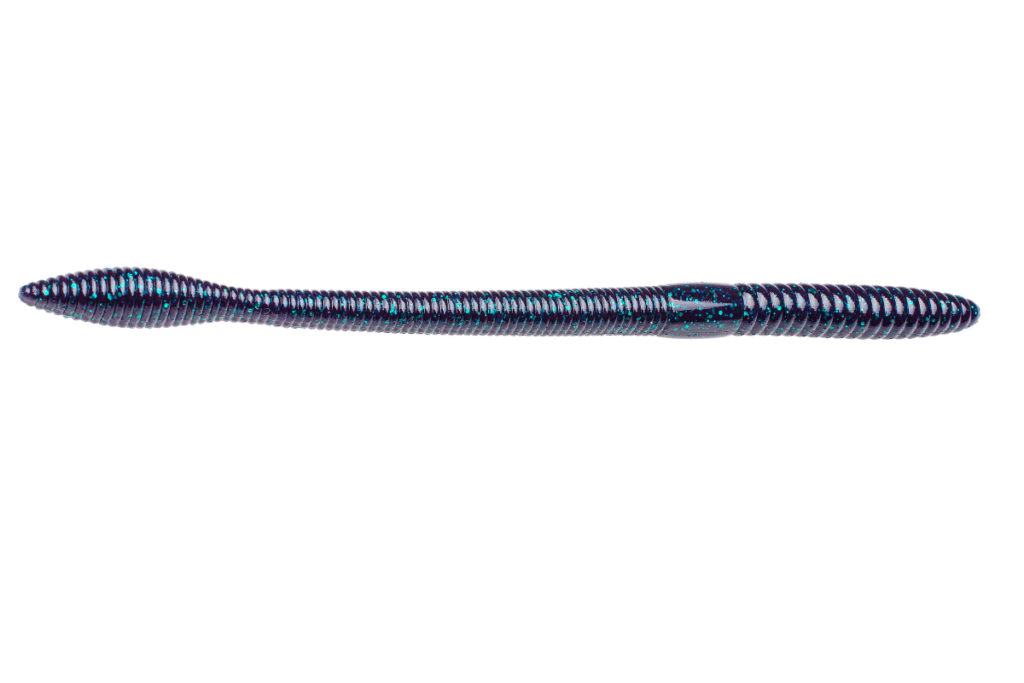We all hope for the outings when the bass are willing to bite and we catch lunkers effortlessly and throughout the day. Then reality sets in. Most days on the water require persistence and the ability to adjust. Then there are days when the bass are not biting. At all. What do we do when in those conditions?
There are three proven tactics that will help you be more deliberate in your presentations that will coax even the most lethargic fish to bite on some of the toughest days: Use low gear ratio reels, say a phrase, and drag a lure.
In this article, I will explain each of these three techniques in detail. There are few guarantees in the bass fishing world, but I do promise you, on days when the bite is extra tough, these three tips will give you the best chance of success.
Low Gear Ratio Reels
Fishing reels, especially baitcast reels, come in a variety of gear ratios. You will see a marking on the side of a baitcast reel that may say something similar to the following three examples: 5.2:1, 6.3:1, or 7.5:1.
This refers to RPT, or recovery per turn. For example, with a 7.5:1 gear ratio reel, you recover 30” of line for every revolution of the handle. That is almost three feet! That amount of recovery is very fast.
A 5.2:1 gear ratio recovers around 20” or 21” per revolution. That may not seem like a huge difference, but think about how much faster a lure is moving if it scoots 9-10” more along the bottom of the lake. That is a significant factor that will impact your results..
The 6.3:1 sits somewhere comfortably in the middle.
The trend right now is to fish with high gear ratio reels. For certain lures and techniques, this is not only what I use, it is what I suggest. For example, on my jig rod that I use when pitching to heavy cover, I always use a high gear ratio reel. When I am done with my presentation, I want the lure back to the boat ASAP so I can get on with my next cast. It also helps to winch that bass out of heavy cover and turn its head quickly so the fish doesn’t retreat deeper into the gnarly stuff and come off.
But, when the bite is tough, I go with a low gear ratio reel.
Crankbaits and low gear ratios
Most anglers consistently fish crankbaits too fast. If you ask some of the best crankbait anglers in the country, they almost all will suggest using a low gear ratio reel. It helps keep the lure moving a the proper rate so the action and hunting ability of the lure is maximized.
If you like to throw crankbaits, make the switch to a low gear ratio reel on tough days and you increase your odds of catching a fish exponentially.
Say a Phrase
This is the tip that I use to help myself slow down more than any other. It works and works well.
When I first was cutting my teeth on the swim jig, I was doing a lot of research about it. Tom Monsoor, from LaCrosse, WI, is known for his swim jig prowess. He has used it successfully on the FLW Tour for many years.
His focus is on swimming the jig as slow as he can without it sinking. He likes the lure to maintain its depth in the water column, but be just on the edge of sinking. If you can picture a struggling baitfish kicking to try and stay upright you have a good mental picture of what he is trying to accomplish. The bait pulses through the water.
Tom says the phrase, “Float like a butterfly, sting like a bee.”
You may have heard that one before.
Saying this phrase to yourself, slowly, as you fish, is amazing. I have such confidence in a swimbait now it is what I throw the majority of the time. Presenting the bait slowly, while saying this little phrase, keeps the lure in the strike zone longer. It also looks like a baitfish that is weak, struggling and therefore an easy meal.
Try your own phrase. Find something that will help you envision that lure moving slowly and patiently. It will work.

Drag a Lure to Catch Lethargic Bass
When I was a young bass angler, my good friend and college roommate’s grandfather was known for his bass angling skills. He loved to fish the manmade canals that crisscross northern Illinois.
I was lucky enough to fish with him on multiple occasions and I am so glad I did.
From a distance, it appeared as though this seasoned bass angler wasn’t doing a thing, yet he was. He loved to drag a small 4” worm on a Slider head across the bottom of the canal.
He fished so slow. At that age, I just didn’t have the patience. Let me tell you, I never, and I mean never, outfished him. He always caught fish no matter the time of year or the conditions he was facing. He taught me a lot.
The Presentation
Dragging a lure is exactly what it sounds like. You take a jig, Texas rigged soft plastic, a shaky head, Ned Rig, or any other sort of bait that works its way along the bottom.
The key is to drag it slowly. When an angler is holding a rod that is 7’ or longer, it doesn’t take much movement with the wrists to swing that massive rod, and therefore pull the lure much, much quicker than we realize.
To keep myself from moving the lure too quickly, I like to cast it out, let it sink, and then use the trolling motor on about 10% to move me.
This method eliminates any chance that I impart too much action on the lure myself. It is such an effective method that co-anglers in bass tournaments have been using it off the back deck for many years to great success.
Final Thoughts
To be a successful bass angler you need to put the odds in your favor. One of the best ways to do that, no matter your experience level, is to slow down.
Using the above-mentioned methods, you can slow down no matter why type of lure you prefer to fish.
The next time that you find yourself in a situation where the bass just do not want to bite, try one of these three techniques. I think you will find that you will be more focused, successful, and become the angler that everyone aspires to be.
Good luck out there and be safe.

